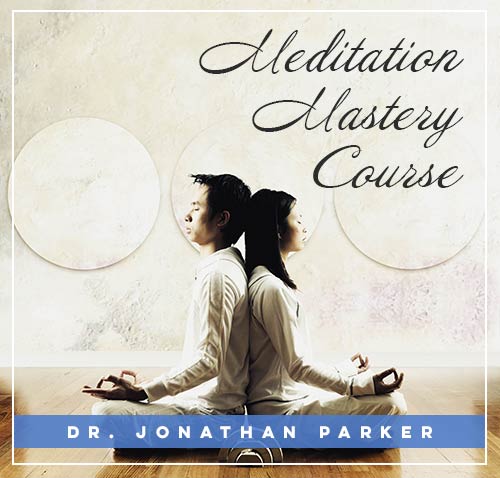Practicing Mindfulness with Kids

Before diving in, please note: This post is for informational purposes only. If you’d like to know more about how we approach topics, feel free to check out our friendly Disclaimer Page.
Hey there, amazing readers! 🖐️ Just a quick note: yes, we know there are a lot of ads here. Trust us, we get it—it’s not the prettiest look, but they help us keep this blog alive and kicking. Those pesky little ads cover the costs of all the behind-the-scenes magic, from hosting and tech stuff to creating content we hope you’ll love.
We’re committed to delivering quality posts, and your support (even just sticking around despite the ads) means everything to us. So, bear with us, and thanks for helping us keep the good vibes rolling. Now, on to the fun stuff! 😉
TRANSLATE BUTTON AT THE END OF THE ARTICLE
Introduction to Practicing Mindfulness with Kids
In today’s fast-paced world, teaching children mindfulness has become increasingly important.
Mindfulness is the practice of being present and aware of one’s thoughts, feelings, and surroundings without judgment.
When kids learn mindfulness techniques, they develop crucial skills that can help them navigate life’s challenges with resilience and emotional intelligence.
This article will explore the benefits of mindfulness for children, simple techniques to practice with kids, how to create a mindfulness routine, and ways to incorporate mindfulness into daily activities and family life.
Benefits of Mindfulness for Children
Practicing mindfulness offers a myriad of advantages for children’s overall well-being.
Some benefits include:
Improved focus and attention span: Mindfulness helps kids concentrate on the present moment, enhancing their ability to focus on tasks and activities.
Reduced anxiety and stress: Mindfulness techniques can alleviate feelings of anxiety and stress, promoting a sense of calm and relaxation in children.
Enhanced emotional regulation: By teaching children to observe their emotions without judgment, mindfulness helps them manage their feelings more effectively.
Better decision-making skills: Mindfulness encourages kids to pause and reflect before reacting impulsively, leading to more thoughtful decision-making.
Increased empathy and kindness: Practicing mindfulness fosters compassion towards oneself and others, promoting empathy and kindness in children’s interactions.
Simple Mindfulness Techniques for Kids
Introducing mindfulness to children can be done through simple and engaging techniques.
Here are some easy practices to get started:
Mindful breathing: Encourage kids to take deep breaths, focusing on the sensation of air entering and leaving their bodies.
Body scan: Guide children through a body scan exercise, where they pay attention to each part of their body, noticing any tension or sensations.
Mindful listening: Have kids listen to different sounds in their environment without labeling or judging them.
Gratitude journal: Encourage children to write down things they are grateful for each day, fostering a positive mindset.
Mindful eating: Teach kids to savor and appreciate their food by eating slowly and paying attention to flavors and textures.
Creating a Mindfulness Routine for Children
Establishing a regular mindfulness routine can help make the practice a habit for children.
Here are steps to create a mindfulness routine:
Choose a consistent time: Set aside a specific time each day for mindfulness practice, such as before bedtime or after school.
Start small: Begin with short mindfulness activities that suit your child’s age and attention span.
Make it fun: Incorporate games, storytelling, or art into mindfulness exercises to make them engaging for kids.
Be consistent: Consistency is key to forming a habit, so try to practice mindfulness with your child daily.
Practice together: Join your child in mindfulness activities to create a bonding experience and lead by example.
Incorporating Mindfulness into Daily Activities
Mindfulness can be integrated into various daily activities to make it a seamless part of children’s lives.
Here are some ways to incorporate mindfulness into daily routines:
Mindful walking: Encourage kids to pay attention to their footsteps and the sensations in their body while walking.
Mindful hygiene: Teach children to focus on each step of their hygiene routine, from brushing teeth to washing hands.
Mindful transitions: Use mindfulness techniques during transitions between activities to help children stay present and calm.
Mindful bedtime: Establish a bedtime ritual that includes relaxation exercises like deep breathing or visualization to promote better sleep.
Mindful play: Encourage children to engage in play mindfully, focusing on the joy and sensations of the present moment.
Teaching Mindfulness to Children of Different Ages
Adapting mindfulness practices to suit children of different ages is essential for effective teaching.
Here are some tips for teaching mindfulness to kids of various age groups:
Preschoolers: Keep mindfulness activities short and interactive, using games, music, and movement to engage young children.
Elementary schoolers: Introduce simple mindfulness exercises like mindful breathing and body scan, gradually increasing the duration as children grow accustomed to the practice.
Tweens and teens: Offer a variety of mindfulness techniques to older children, allowing them to choose what resonates with them, such as yoga, meditation, or journaling.
Tailor instructions: Adjust mindfulness instructions and language to match children’s developmental stage and cognitive abilities for better understanding and engagement.
Be patient: Understand that children may respond differently to mindfulness practices based on their age and maturity level, so be patient and supportive throughout the learning process.
Addressing Challenges in Practicing Mindfulness with Kids
While teaching children mindfulness can be rewarding, it also comes with its challenges.
Here are some common obstacles and how to address them:
Lack of interest: If children show disinterest in mindfulness, make the practice more engaging by incorporating their favorite activities or themes.
Short attention spans: For kids with short attention spans, start with brief mindfulness exercises and gradually increase the duration as they build focus.
Resistance: Some children may resist mindfulness due to misconceptions or discomfort.
Address their concerns and explain the benefits of the practice in a simple and relatable way.
External distractions: Minimize external distractions during mindfulness sessions by choosing a quiet and calm environment for practice.
Consistency: Maintaining a consistent mindfulness routine can be challenging.
Create a visual schedule or set reminders to help children stay on track with their practice.
Fostering Mindfulness in the Family Environment
Creating a mindful environment at home can reinforce children’s mindfulness practice.
Here are ways to foster mindfulness in the family:
Lead by example: Demonstrate mindfulness in your own behavior and language to show children the importance of the practice.
Practice together: Engage in mindfulness activities as a family, such as mindful eating, nature walks, or breathing exercises.
Open communication: Encourage open discussions about emotions, thoughts, and mindfulness experiences to create a supportive and understanding atmosphere.
Mindful parenting: Use mindfulness techniques to manage your own stress and emotions, promoting a calm and nurturing parenting style.
Set boundaries: Establish boundaries around screen time and digital devices to create a mindful environment that encourages in-person interactions and connection.
Mindfulness Activities for Kids in School
Introducing mindfulness in school settings can benefit children academically and emotionally.
Here are mindfulness activities for kids in school:
Mindful breathing exercises: Teach children simple breathing techniques to calm their minds and focus their attention during class.
Mindful movement: Incorporate yoga or stretching exercises to help kids release tension and stay present throughout the school day.
Mindful listening: Practice active listening skills by engaging students in mindful listening exercises during group discussions or presentations.
Mindful coloring: Offer coloring sheets or mandalas as a mindful activity to promote relaxation and creativity in the classroom.
Mindful reflection: Encourage students to journal or reflect on their thoughts and feelings during quiet moments, fostering self-awareness and emotional regulation.
Mindfulness Apps and Resources for Children
In the digital age, there are numerous mindfulness apps and resources designed specifically for children.
Here are some popular apps and resources to introduce kids to mindfulness:
Headspace for Kids: This app offers guided meditations, breathing exercises, and mindfulness activities tailored for children of all ages.
Calm Kids: Calm Kids provides relaxation techniques, bedtime stories, and mindful exercises to help kids unwind and manage stress.
Smiling Mind: Smiling Mind offers age-appropriate mindfulness programs for preschoolers, primary schoolers, and teenagers, promoting mental well-being and emotional resilience.
Mindful Schools: Mindful Schools provides online courses and resources for educators, parents, and children to incorporate mindfulness into school curricula and home environments.
Breathe, Think, Do with Sesame: This interactive app uses Sesame Street characters to teach children mindfulness skills through fun and engaging activities.
Encouraging Mindfulness in Children’s Social Interactions
Mindfulness can enhance children’s social interactions by promoting empathy, compassion, and active listening.
Here are ways to encourage mindfulness in children’s social interactions:
Teach empathy: Help children understand others’ feelings and perspectives by practicing empathy in conversations and role-playing scenarios.
Mindful communication: Encourage children to speak mindfully by taking pauses, listening attentively, and choosing their words thoughtfully in social interactions.
Conflict resolution: Teach kids to approach conflicts with mindfulness, using breathing exercises and self-regulation techniques to manage emotions and find peaceful resolutions.
Mindful playdates: Foster mindfulness in playdates by setting intentions for positive interactions, sharing feelings openly, and practicing gratitude for friendships.
Group mindfulness activities: Organize group mindfulness activities like mindful games, storytelling circles, or collaborative art projects to promote cooperation and connection among children.
Evaluating the Impact of Mindfulness Practices on Children
Assessing the impact of mindfulness practices on children involves observing changes in their behavior, emotions, and overall well-being.
Here are ways to evaluate the effectiveness of mindfulness practices:
Behavioral changes: Notice any improvements in children’s behavior, such as increased focus, emotional regulation, and empathy towards others.
Emotional well-being: Observe changes in children’s emotional well-being, including reduced anxiety, stress, and heightened feelings of calm and contentment.
Academic performance: Monitor how mindfulness practices impact children’s academic performance, such as improved concentration, memory retention, and problem-solving skills.
Social skills: Evaluate children’s social skills by assessing their ability to communicate mindfully, resolve conflicts peacefully, and cultivate positive relationships with peers.
Self-awareness: Encourage children to reflect on their mindfulness practice and its effects on their self-awareness, self-compassion, and personal growth over time.
Conclusion
In conclusion, practicing mindfulness with kids offers a wealth of benefits for their overall development and well-being.
By introducing simple techniques, creating a mindfulness routine, and incorporating mindfulness into daily activities, parents and educators can help children cultivate essential skills like focus, emotional regulation, empathy, and kindness.
Teaching mindfulness to children of different ages, addressing challenges, fostering a mindful family environment, and encouraging mindfulness in social interactions are crucial aspects of nurturing a mindful lifestyle in kids.
With the support of mindfulness apps, resources, and evaluation tools, parents and educators can assess the impact of mindfulness practices on children and witness positive changes in their behavior, emotions, and relationships.
By prioritizing mindfulness in children’s lives, we can empower them to navigate life’s challenges with resilience, compassion, and a deeper sense of self-awareness.

The Enlightenment Journey is a remarkable collection of writings authored by a distinguished group of experts in the fields of spirituality, new age, and esoteric knowledge.
This anthology features a diverse assembly of well-experienced authors who bring their profound insights and credible perspectives to the forefront.
Each contributor possesses a wealth of knowledge and wisdom, making them authorities in their respective domains.
Together, they offer readers a transformative journey into the realms of spiritual growth, self-discovery, and esoteric enlightenment.
The Enlightenment Journey is a testament to the collective expertise of these luminaries, providing readers with a rich tapestry of ideas and information to illuminate their spiritual path.
Our Diverse Expertise 🌟
While our primary focus is on spirituality and esotericism, we are equally passionate about exploring a wide range of other topics and niches 🌍📚. Our experienced team is dedicated to delivering high-quality, informative content across various subjects ✨.
To ensure we provide the most accurate and valuable insights, we collaborate with trusted experts in their respective domains 🧑🏫👩🏫. This allows us to offer well-rounded perspectives and knowledge to our readers.
Our blog originally focused on spirituality and metaphysics, but we’ve since expanded to cover a wide range of niches. Don’t worry—we continue to publish a lot of articles on spirituality! Frequently visit our blog to explore our diverse content and stay tuned for more insightful reads.






